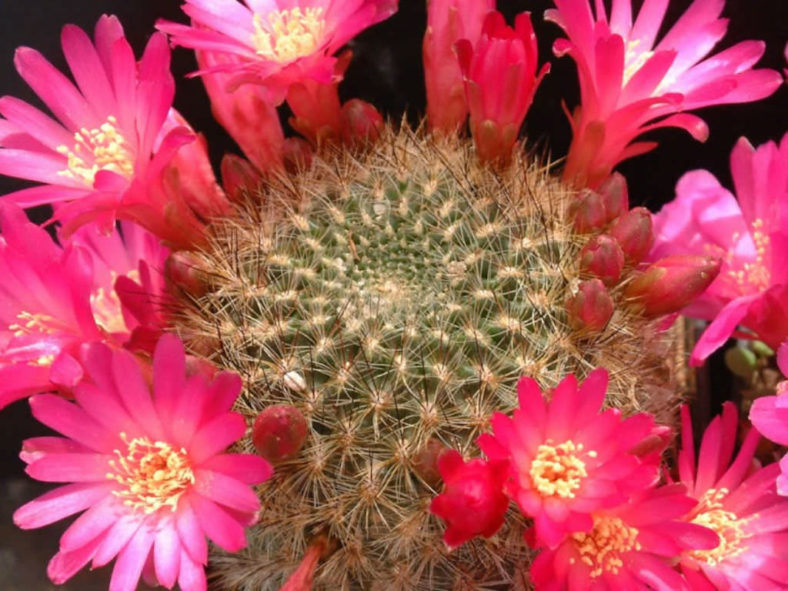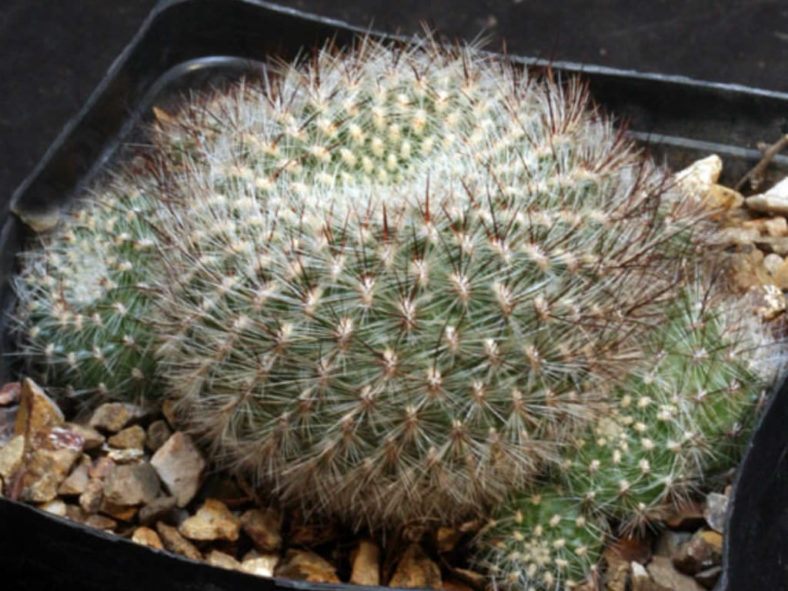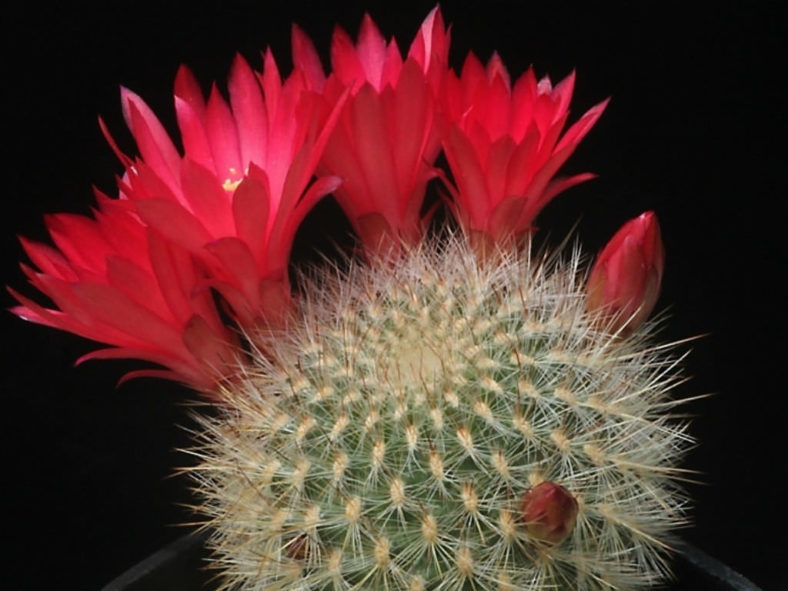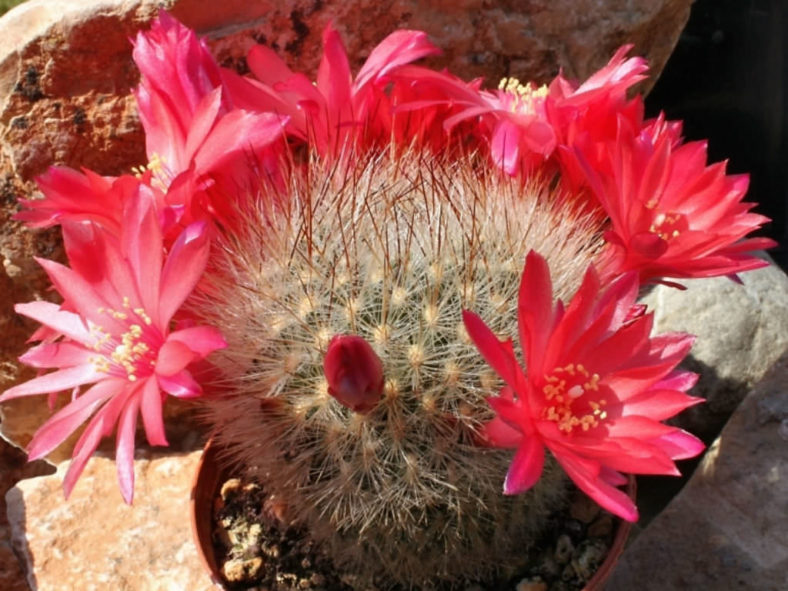Scientific Name
Rebutia steinbachii subsp. tiraquensis (Cárdenas) D.R. Hunt
Synonym(s)
Rebutia tiraquensis, Sulcorebutia tiraquensis, Weingartia tiraquensis
Scientific Classification
Family: Cactaceae
Subfamily: Cactoideae
Tribe: Trichocereeae
Genus: Rebutia
Description
Rebutia steinbachii subsp. tiraquensis, also known as Rebutia tiraquensis, is a usually clustering, rarely solitary cactus, readily forming clumps of many heads. The stems are grayish-green to dark green, sometimes very dark magenta-green, and almost entirely concealed by variously colored spines.
In the spring, Rebutia steinbachii produces numerous bright pink to light purple flowers in a ring at the base of the plant. The flowers can reach up to 1.4 inches (3.5 cm) in length and 1.8 inches (4.5 cm) in diameter. They remain open for up to five days.

Hardiness
USDA hardiness zones 9b to 11b: from 25 °F (−3.9 °C) to 50 °F (+10 °C).
How to Grow and Care
If you can grow cacti and succulents successfully, you can likely grow the popular Rebutias without too much trouble. Their water and light requirements are fairly typical for many cacti species, including a cooling period in the winter to promote better blooming. Watering should be done carefully, allowing the plant to almost dry out between waterings. The cactus mustn't be exposed to prolonged dampness and standing water. Never let your cactus sit in a dish of water. Instead of propagating your offsets, let the plant form a large cluster for the best viewing. When it blooms, this will make a stunning display. Lastly, fertilize during the growing season for the best results.
Repot as needed, preferably during the warm season. To repot your Rebutia, ensure the soil is dry before repotting, then gently remove the pot. Knock away the old soil from the roots, removing any rotted or dead roots. Treat any cuts with a fungicide. Place the plant in its new pot and backfill it with potting soil, spreading the roots out as you repot. Leave the plant dry for a week or so, then water lightly to reduce the risk of root rot.
Learn more at How to Grow and Care for Rebutia.
Origin
Rebutia steinbachii subsp. tiraquensis is native to Bolivia.
Links
- Back to genus Rebutia
- Succupedia: Browse succulents by Scientific Name, Common Name, Genus, Family, USDA Hardiness Zone, Origin, or cacti by Genus
Photo Gallery
Click on a photo to see a larger version.


